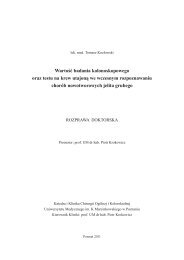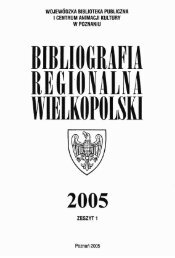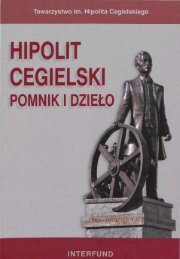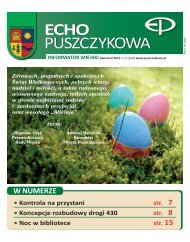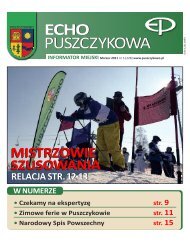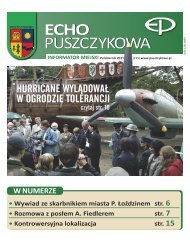MILITARY PHARMACY AND MEDICINE
MILITARY PHARMACY AND MEDICINE
MILITARY PHARMACY AND MEDICINE
Create successful ePaper yourself
Turn your PDF publications into a flip-book with our unique Google optimized e-Paper software.
© Military Pharmacy and Medicine • 2012 • 4 • 58 – 60to these regulations, Medical Corps officers arealso responsible for soldiers’ nutrition:“The officers of the Medical Department of theArmy shall unite with the officers of the line(under such rules and regulations as shall be prescribedby the Secretary of War) in superintendingthe cooking done by the enlisted men; and theSurgeon General shall promulgate to the officersof said Corps such regulations and instructionsas may tend to insure the proper preparation ofthe ration of the soldier.” [2]About 1870, first studies were conducted inEurope to measure the physiological load of soldiersburdened by the accouterment of differentweight, training at different ambient temperatures.These and subsequent studies conductedin Europe and the US led to determination ofenergy expenditure of humans undertakingvarious forms of physical activity, e.g. marching,including the carried load. The above studies,albeit encumbered with large margin oferror, showed that soldiers may be burdened withenergy expenditure in the range of 5,000-6,000kilocalories per day, depending on the accoutermentweight and outside temperature [3]. However,determination of energetic and nutritionalneeds of soldiers was at that time based mainlyon the average consumption of food. The foodration proposed at the end of World War I by theQuartermaster General of the US Army MedicalCorps was based on the results of the studies onthe quantities of standardized food consumed bythe soldiers in 400 canteens in years 1917-1918.The results of the studies allowed to determinethe mean energy value of food consumed at thelevel of 3,633 kcal with the actual values fallingwithin the range of 3000 to 4000 kcal [4,5]. Subsequentstudy of the energy demand in soldiers,based on calculations of the energy values of foodrations were conducted in the US in 1941. Thestudy covered a total of several hundred unitsof infantry, air force, armored troops, artillery,engineering troops, chemical troops, cavalry,quartermaster troops, logistic services troops,medical troops, military training centers andothers. The mean daily energy value of food consumedby soldiers was 3,694, ranging from 3,132to 4,135 kcal. The highest energy value was measuredfor food rations dispensed in autumn season(September-November — 3,960 kcal), whileReview articlethe lowest energy value was measured for rationsdispensed in spring season (March-May — 3,570kcal) [6,7,8,].The results did not differ significantly fromthese obtained in years 1917-1918. A study conductedin 1943 in 99 canteens of the US Armyground forces and encompassing 130,000 foodrations showed that the mean energy value of adaily ration was 3,468 kcal, ranging from 2,774to 4,644 kcal [9]. Finally, a study to determinethe energy demand in all US Army troops wasundertaken and completed in the spring of 1945[10]. The mean energy value of the food rationsconsumed by soldiers was 3,744 kcal and rangedfrom 3,471 to 4,078 kcal. The mean energy valuedetermined in the study was very similar to thevalues obtained for food rations in the studiesconducted during both World war I (3,633 kcal),and World War II (3,694 kcal).During the World War II, the energy value offood rations in the British Army was higher thanthat in the American food rations and amountedto 5,127 kcal in January 1942. Due to the overlyhigh weight of the rations, the energy value wasreduced to 4,562 kcal in May 1942 [11].Results of subsequent studies served as basis forrevisions of nutritional standards for the Americansociety; changes in the nutritional recommendationsfor soldiers followed these revisions.Studies of the energy expenditureof soldiers in PolandAlso in Poland, studies of energy expenditure ofsoldiers in active service were conducted as earlyas before World War II [12,13].The nutritional tables for Polish soldiers, developedin early 1920s, determined the minimumnutritional demand of soldiers. However, theenergy and nutritional value of rations actuallyused was insufficient, leading to hunger amongsoldiers. Therefore, the nutritional standard wasrevised and the energy value was established at2,900 kcal and later at 3,800 kcal [14].The history of studies of the energy expenditureof soldiers of the Polish Army dates back to 1925,when major dr. Gustaw Szulc determined theenergy load of soldiers in military service.58 http://military.isl-journals.com



